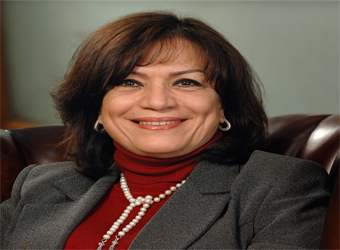The EFG-Hermes Foundation is proud to announce a new initiative to control Hepatitis C in Egypt. Launched in partnership with MSD, a world leader in pharmaceuticals, and coming under the auspices of the National Committee for the Control of Viral Hepatitis (NCCVH), the campaign focuses on the treatment of children infected with the disease.
In its first phase, the EFG Hermes Foundation funded initiative will treat a number of children afflicted with Hepatitis C in Mansoura, as well as other infected members of the community in need of treatment at a total donation of EGP 2,000,000.
“With 9 million Egyptians currently suffering from the disease, roughly 10% of the country, we have the highest prevalence of Hepatitis C in the world,” explains Prof. Dr. Wahid Doss, Head of the National Liver Institute and Chairman of the NCCVH. “Improving public awareness and early detection are the keys to saving lives,” Doss added.
The first stage of the initiative focuses on treating children, not only because they are particularly vulnerable to the disease, but because early detection and treatment have proven effective in this age group, with up to 60% responding well to treatment.
“We at the Foundation are committed to serving the members of our community most in need,” said EFG Hermes Foundation CEO Hanaa Helmy. “Through our partnership with MSD, we will be able to assist the project beneficiaries to lead healthy, sustainable lives.”
Dr. Nibal Dahaba, Head of Public Relations and Media at MSD, also highlighted the company’s sustained efforts to improve public awareness in Egypt and its continued cooperation with NGOs and the NCCVH to provide enhanced healthcare services to all segments of the population.
Prof. Dr. Ahmed Abdullah, Head of the Pediatric Liver and Gastroenterology unit at Mansoura Hospital, urged other companies, NGOs and individuals to follow the example of EFG Hermes Foundation and MSD, and adopt similar initiatives to provide much-needed support and funding to help decrease infection rates of Hepatitis C in Egypt.
“High costs prevent many patients from getting treatment,” explained Ms. Mona Zulficar, Chairperson of EFG Hermes Holding (HRHO.CA) and President of the EFG Hermes Foundation Board of Trustees. “The chronic lack of access to treatment underscores the importance of sustainable community development initiatives in combating the disease, and that’s where we come in.”
The initiative was announced at a press conference on 4th March 2013, which had a number of prominent members of the health community in attendance, including Doss and Abdullah as well as Prof. Dr. Manal Hamdy El-Sayed, Professor of Pediatrics at Ain Shams University and member of the NCCVH.
“The results of the last survey held by the Ministry of Health in 2009 showed the infection rate among children had reached three cases for every 1,000 children nationwide,” said Prof. Dr. Manal Hamdi El-Sayed, Professor of Pediatrics at Ain Shams University. “We will focus on treating children as early detection and treatment have proven effective in this age group. We were surprised by the results of later studies, especially in informal settlements, where the infection rate jumped to an alarming 1.5%, underscoring the importance of such initiatives,” added Dr. Manal.
“28.4% of total infections in Egypt occur in the Delta governorates, and therefore we plan to focus our efforts on this region,” continued Dr. Manal, who is also calling for the inclusion of children ages three to fifteen in the Ministry’s new national survey, the latest of which showed infection rates had reached 15% among children between the age of 15 and 19.
The EFG Hermes Foundation has a long history of community outreach and development programs, including health-related public awareness campaigns for A/H1N1 and Hepatitis B, in addition to supporting Hepatitis B vaccination among university students. The Foundation’s flagship project, Ro’ya, is a poverty alleviation initiative that helped transform the lives of thousands of residents of Ezbet Yacoub in Beni Sweif through integrated development. The project targeted human, economic and infrastructure development.
